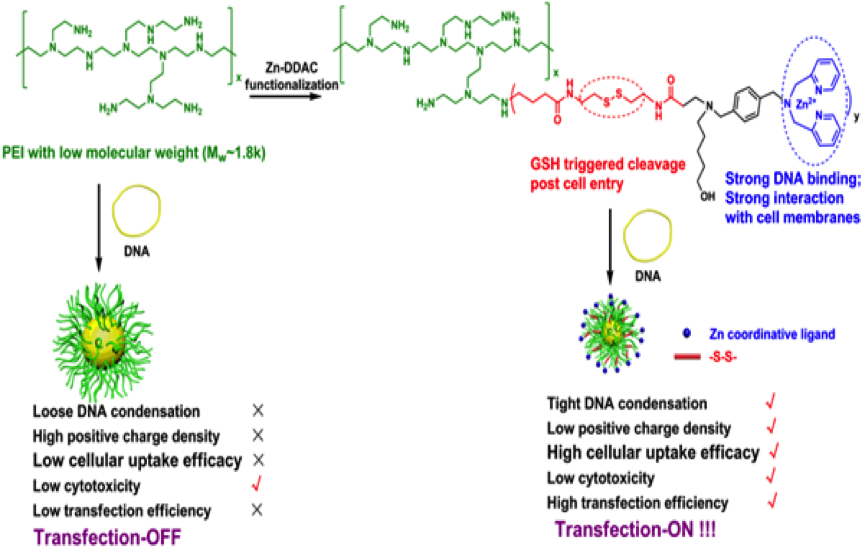|
|
Gene therapy has shown broad application prospects in tackling some of the diseases that threaten human health, like cancer and Parkinson’s disease. However, some challenges remain, especially because LMW cationic polymers perform far less efficiently than their high-molecular-weight counterparts, mainly due to weaker nucleic acid encapsulation.

Prof. Guo Tianying of Nankai University’s College of Chemistry and his group recently reported the design and synthesis of a dipicolylamine-based disulfide-containing zinc (II) coordinative module (Zn-DDAC), which is used to functionalize LMW PEI (Mw ≈ 1800 Da) to give a non-viral vector (Zn-PD) with high efficiency and safety in primary and stem cells. Their findings provide a valuable insight into the exploitation of LMW cationic polymers for gene delivery and demonstrate great promise for the development of next-generation non-viral vectors for clinically viable gene therapy.
The results of the research were published in the renowned Journal of the American Chemical Society (J. Am. Chem. Soc., 2017, 139, 5102-5109). Prof. Guo Tianying is the corresponding author, and the Ph.D. student Liu Shuai is the first author. The research was financially supported by National Natural Science Foundation, Ministry of Education, and Nankai University’s Doctoral Innovative Plan.
|


 Position:
Home
>>
News
>>
正文
Position:
Home
>>
News
>>
正文

